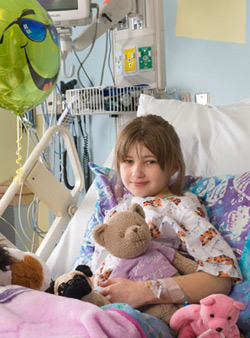
“Just as there are rapid response processes for adults with a possible stroke, there should be a rapid response process for children with a possible stroke that includes expedited evaluation and imaging or rapid transfer to a medical center with pediatric stroke expertise,” said Lori Jordan, M.D., Ph.D., study senior author and an assistant professor of pediatrics and neurology at Monroe Carell Jr. Children’s Hospital at Vanderbilt in Nashville, Tennessee. “We need the emergency department, radiology, critical care medicine and often many other specialists to work quickly and efficiently together to treat pediatric patients.”
Researchers reviewed quality improvement data from Vanderbilt’s pediatric stroke program. They established a “stroke alert” plan in the emergency room which requires a neurology resident to see a child with stroke symptoms within 15 minutes and for most children, quickly obtain an MRI.
Using the method for 124 children (average age 11) with stroke-like symptoms between April 2011 and October 2014, researchers found:
24 percent suffered strokes and 2 percent had transient ischemic attacks (TIA);
17 percent had complex migraine (associated with neurological symptoms),
15 percent suffered seizures, and
14 percent were diagnosed with critical illnesses such as meningitis, encephalitis or tumors.
Of the confirmed stroke/TIA patients, 13 percent had sickle cell anemia or congenital heart disease.
The most common presenting symptoms were weakness (65 percent), altered mental status (44 percent) and headache (37 percent).
The median time between emergency department arrival and neurology consultation was 28 minutes, and the median time from consultation to neurologist at-bedside was 7 minutes researchers said. About 94 minutes elapsed between emergency department arrival to MRI and 59 minutes between arrival and CT.
“Rapid evaluation and appropriate testing is critical,” said Jordan, who also is director of the Vanderbilt Pediatric Stroke Program. “Prior studies have suggested that stroke in children often takes a long time to diagnose due to delays in imaging. In one recent Canadian study, in-hospital delay was 12.7 hours for children with stroke. We were able to initiate the most accurate type of brain scan, a MRI of the brain, within 94 minutes on average.”
“Know the symptoms of stroke and consider the possibility of a stroke no matter what a person’s age and have your child rapidly evaluated.” The study done by American Heart Association.